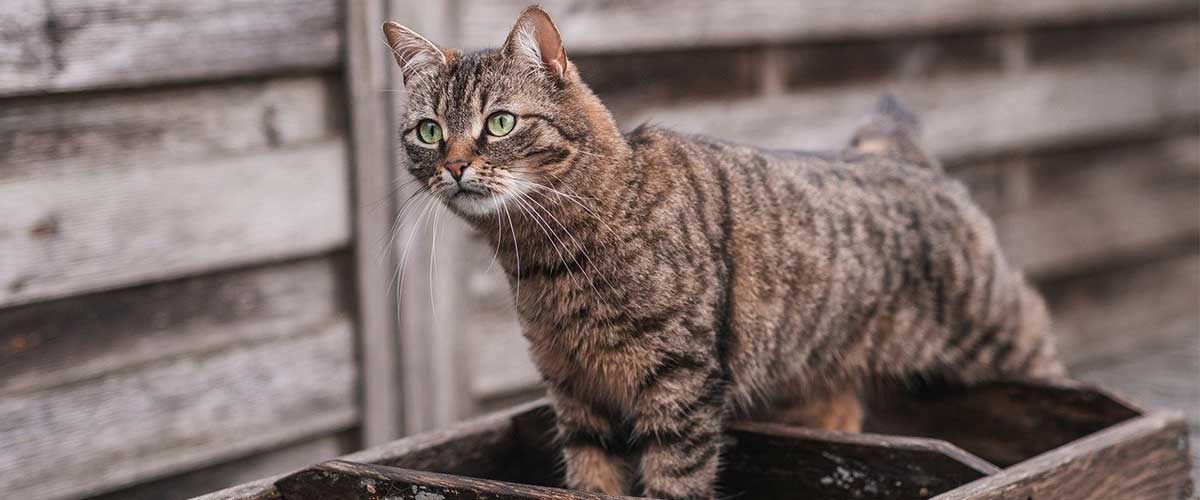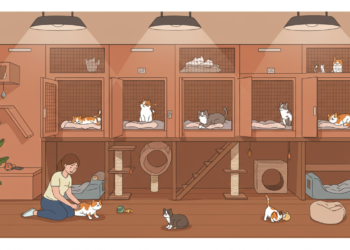Bringing a semi-feral cat indoors can be a true challenge. Some cats live in cat colonies for the entire duration of their lives, which means that they are very wary when it comes to interacting with people.
But there are some ways of becoming friends with a semi-feral cat. While it does take time, your semi-feral cat can gradually adjust to you and your habits and might even begin to trust you to the extent that they start spending time in your home.
Here are some steps for making this process more effective and less time-consuming. How to Help a Semi-Feral Cat Get Used to Your Home
Respect the cat’s boundaries
If the cat you want to tame or convince to spend more time indoors hasn’t really had a chance in their life to understand that people have good intentions, you should take it slow.
Semi-feral cats don’t react well to direct contact. For this reason, you should avoid looking into the animal’s eyes or delving into their personal space all of a sudden.
Allow the cat to sniff around your yard and your entryway. Don’t make any sudden movements if they’ve seen that you’re sitting or standing in a specific spot.
Reading Suggestion: 9 Best Cat Food Dispensers [Updated 2022]
Go about your business as if the cat isn’t there – at least at first – as this will make them feel a lot more at ease.
Food and treats
One thing that all cats love is food, and that’s a bit of knowledge that you can use to your advantage. Semi-feral cats have fewer opportunities of eating on a regular basis, especially if they don’t go on visits to other homes.
They might be forced to live off of small prey that they hunt down whenever it is available.

That’s where you come along. Since most semi-feral cats aren’t at first comfortable with the idea of stepping inside your home to grab something to eat, you should make sure that they have kibble and freshwater available right next to your door.
If their bellies are full and they’re feeling safe, they are more likely to want to investigate what’s inside your house.
On the other hand, some cats might respond better to you leaving treats indoors but right next to the entryway. And if you see that the animal takes a very long time to gain the courage to step inside, you might want to move the food and water bowls gradually closer to your house – until they’re completely indoors.
Slow and steady wins the race
Do take into account that you might simply never be able to tame a semi-feral cat. As previously mentioned, cats that have lived in cat colonies and have little to no contact with humans might not respond well to being forced to engage with them. But even wild cats can become convinced that you are nothing other than well-intended.
It could take you six to ten months or more to get the semi-feral cat to become your pet. Building trust takes a long time for both people and animals, so make sure you’re patient and care for the cat without having any particular expectations and without rushing things.
Prepare a separate room for the cat
If the semi-feral cat is to go into your home, it would be great if you were to have a designated space for them.
This is particularly true for homes where other pets might reside. If you are already the owner of a cat, the two might butt heads if they have to share the same space.
Semi-feral cats aren’t eager to go onto new and previously marked territories, especially if they are quite scaredy themselves. So, if you have a spare room, just leave the door open and allow the cat to lounge in there without bothering them.
Maintain a routine
In order for a semi-feral cat to start trusting you, you need to make sure that you create a healthy routine. Get the animal used to the idea that you will give them food every morning and every evening.
Maintain consistent and short visits throughout the week to get the cat to feel more comfortable with you. If you make a too sudden change in the routine that you have created, the cat might feel threatened or alarmed and might never come back to your area again. This is particularly true for animals that have gone through some kind of trauma during their childhood.
Let the cat initiate contact
Semi-feral cats that now feel at ease with you will take the first steps and will come to you sooner or later.
Although it might be disheartening for you to have to wait for several months before this happens, it’s better for it to occur late rather than never.
If the cat gets more comfortable and goes indoors, that shouldn’t take you by surprise. However, should they manage to frighten you, you ought to try and avoid yelling, jumping, or moving too fast – as this can also lead to the cat being scared and wary of coming back to your home.
Use your voice
While trying to touch the semi-feral cat should not be part of your plan, at least at the beginning of the journey, you should make a habit out of talking with them.
The reason we’re giving you this piece of advice is that any animal can slowly get used to the sound and timbre of your voice and correlate it with pleasant things, such as you taking a food bowl outdoors for them to have.
The cat will gradually understand how you are feeling depending on the pitches in your voice, so try to use soothing tones. As excited as you might be about this cat popping into your yard for a nice visit, if you scream, giggle, or squeak, you might inadvertently scare them.
Final thoughts
Once the cat becomes used to you and starts spending more time in your home, you might want to consider taking them to the vet.
A visit to the animal hospital can have lots of advantages, from allowing you to find out whether or not the cat is microchipped (and therefore, might have an owner), spayed or neutered, or infested with external or internal parasites.
Cats that spend the majority of their time outdoors have a much higher likelihood of catching diseases from other animals. So, if your future pet seems to be perfectly at ease in your home, consider switching to an indoor-only lifestyle.
Finally, get the cat vaccinated when you can take them to the vet. Vaccines can protect animals against infectious (and potentially deadly) viral diseases such as FIV, FIP, FeLV, Feline Enteric Coronavirus, and more.









